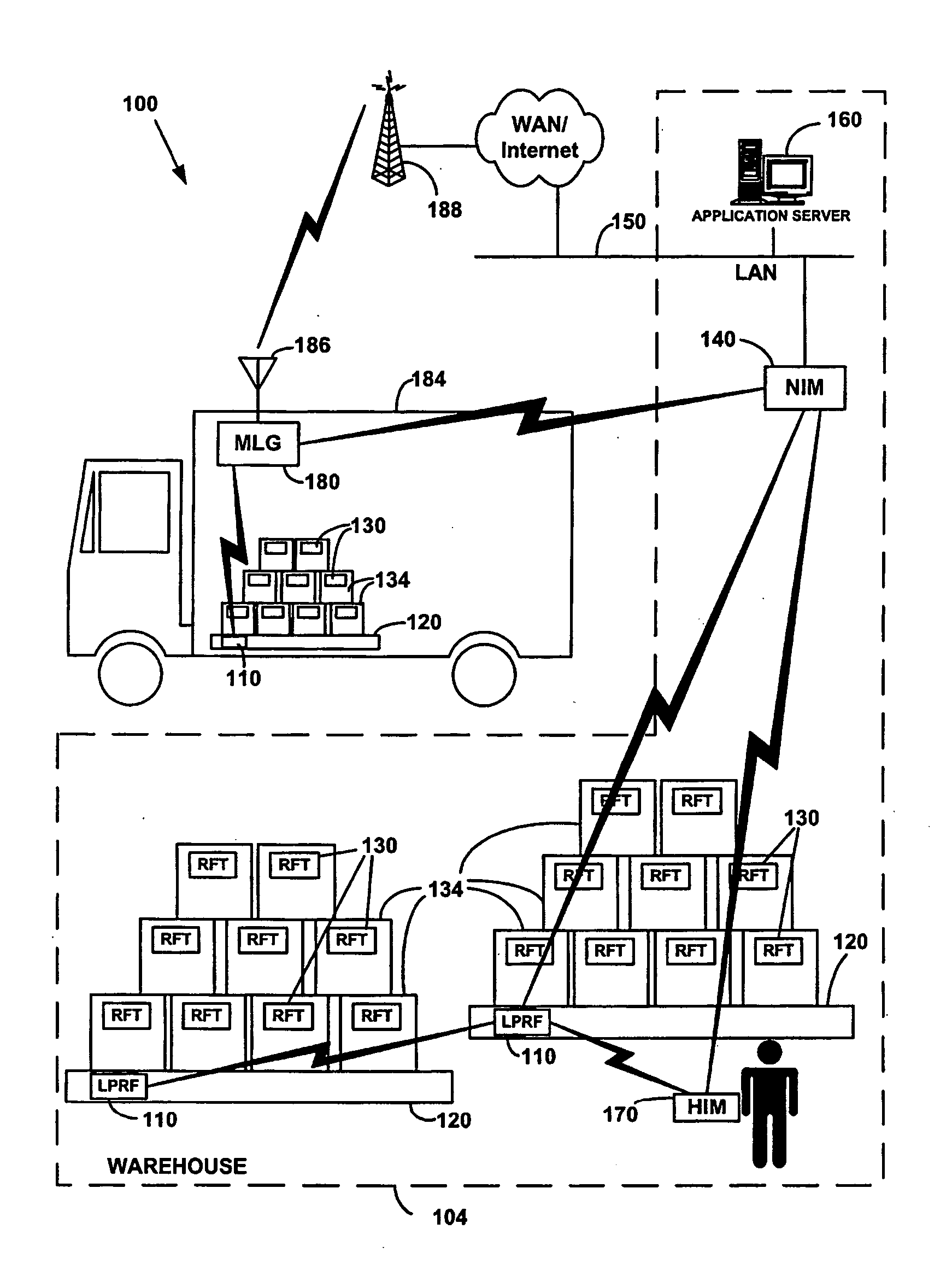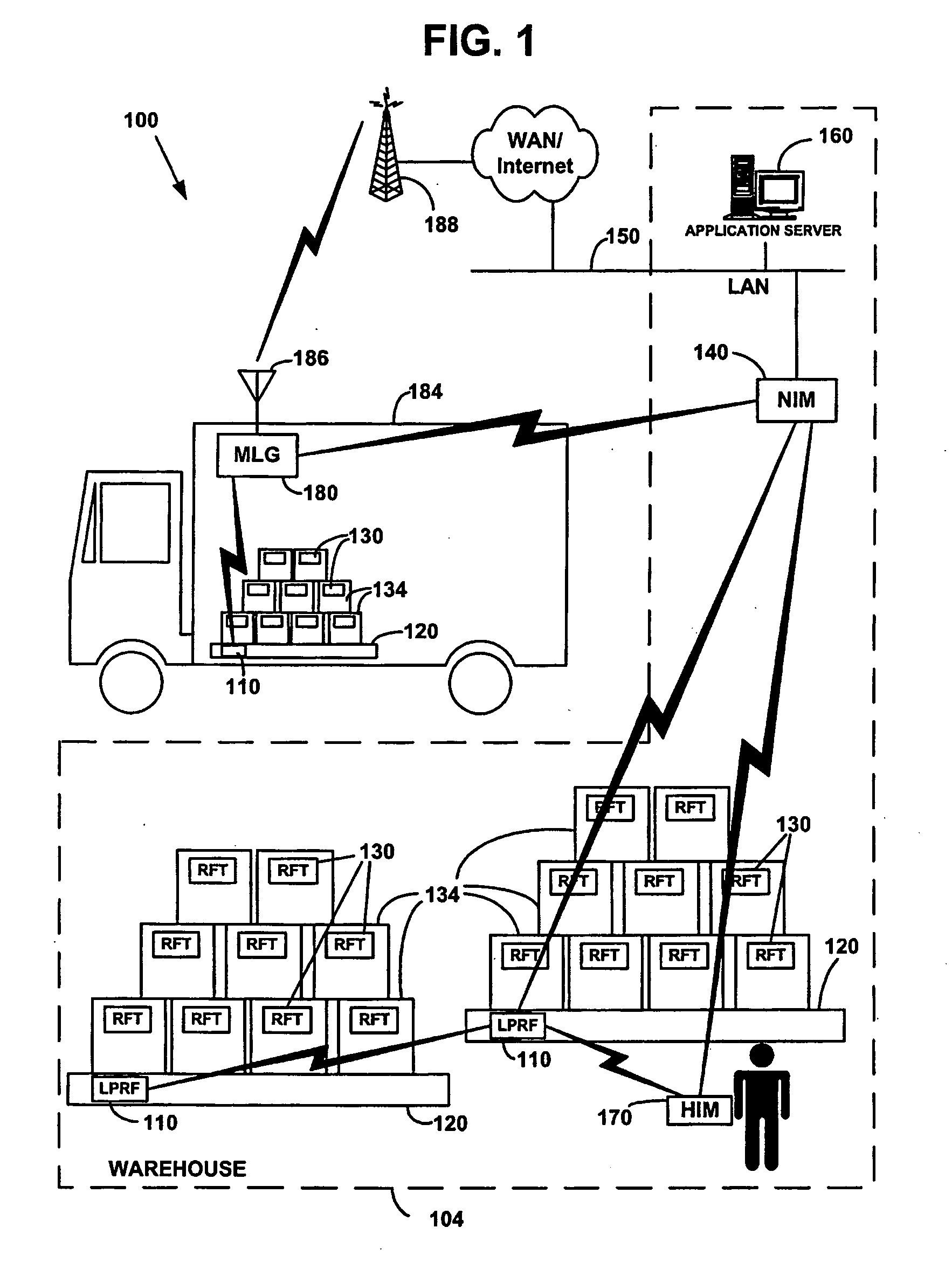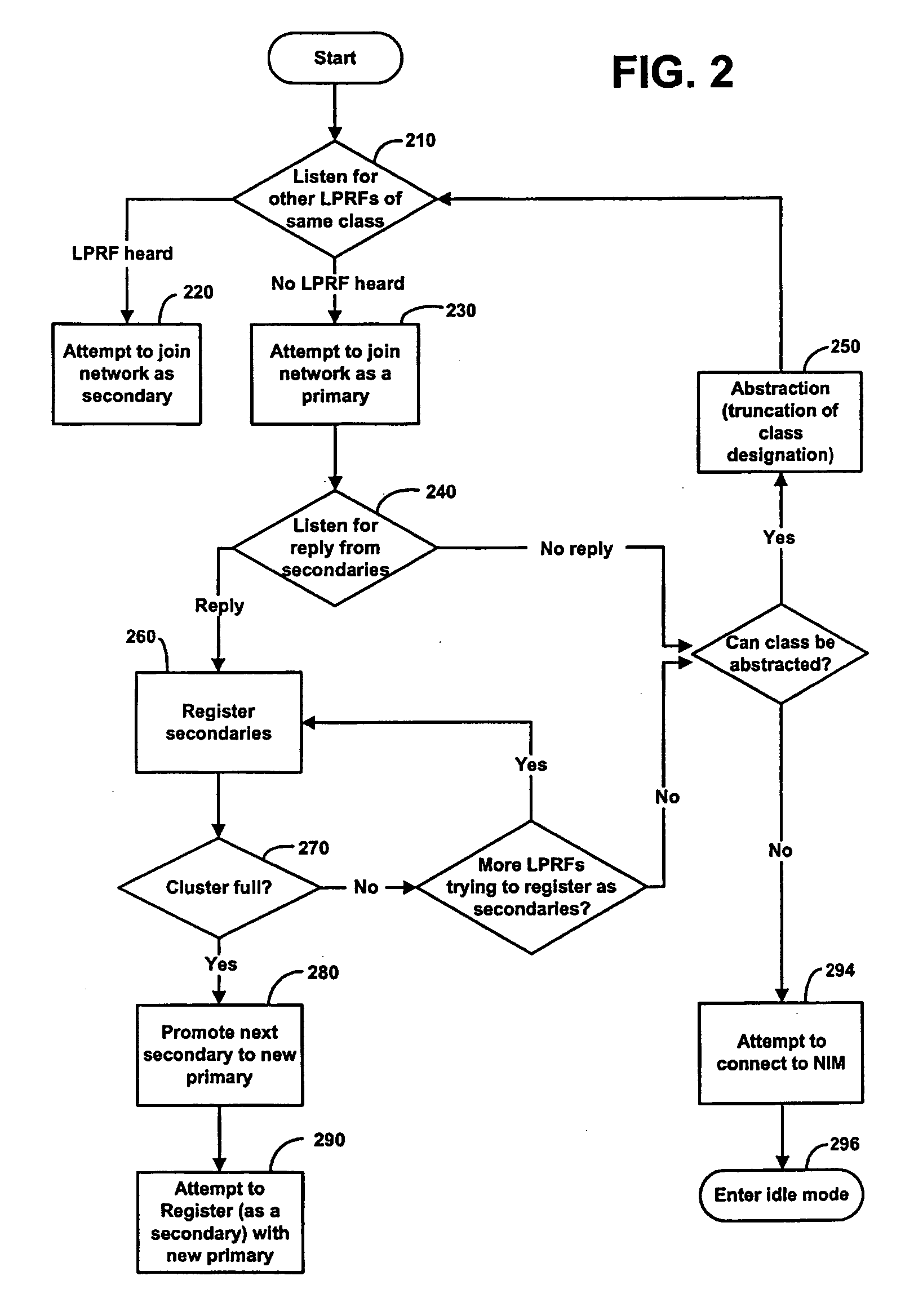Network Formation in Asset-Tracking System Based on Asset Class
a network formation and asset technology, applied in data switching networks, instruments, high-level techniques, etc., can solve the problems of increasing radio traffic and interference, reducing the battery life of the node, and most known methods that do not address the self-configuration of the wireless node, etc., to achieve high reliability
- Summary
- Abstract
- Description
- Claims
- Application Information
AI Technical Summary
Benefits of technology
Problems solved by technology
Method used
Image
Examples
example 2
[0142] Warehouse / Retail System
[0143] A warehouse store such as Costco carries hundreds of brands of products. Nevertheless, all products need to be inventoried on a realtime basis. In accordance with the present invention, a Wireless Reader Tag is attached to each pallet of goods and assigned a class designation that denotes the manufacturer of goods on that pallet (e.g., Pillsbury, Sony, Kellogg's, etc.). Each Wireless Reader Tag may also include in its class designation or profile, information about the goods on the pallet. Each boxes on the pallet carries a Wireless Tag that is read by the Wireless Reader Tag of the pallet. On demand, each Wireless Reader Tag gathers information about the Wireless Tags on its pallet and relays the information back to the asset-tracking application server. At any given time, an employee of the warehouse store can inventory goods of a selected manufacturer by sending a query that will be received only by Wireless Reader Tags of the selected class c...
example 3
[0144] Shipping Containers Tracking System
[0145] Containers full of material shipped via rail or ship can be received and logged into a yard by manufacture based on class information stored on Wireless Reader Tags. The Wireless Reader Tags form a network with other containers from a particular manufacturer and allow quick and efficient tracking of containers. Messages directed to a selected class will not affect the battery life of Wireless Reader Tags of other classes because only Wireless Reader Tags of the selected class will wake up from standby to receive the messages and process the queries. The manufacturer classes can be divided into categories and subcategories, thereby further collectively reduce battery consumption and radio interference.
example 4
[0146] Manufacturing and Supply Chain Tracking System
[0147] A computer manufacturer may track the status of its supply chain in accordance with the asset-tracking application of the present invention. The classes defined are "raw material," "component stuffing," "monitor assembly," "final assembly," "shipping," "in transit," and "distributor." The manufacture can inventory raw material throughout the process by addressing the raw material class, and can find out where in the manufacturing process the computer has reached by addressing monitor assembly or final assembly classes.
[0148] In view of the foregoing detailed description of preferred embodiments of the present invention, it readily will be understood by those persons skilled in the art that the present invention is susceptible of broad utility and application. While various aspects have been described in the context of arborist uses, the aspects may be useful in other contexts as well. Many embodiments and adaptations of the...
PUM
 Login to View More
Login to View More Abstract
Description
Claims
Application Information
 Login to View More
Login to View More - R&D
- Intellectual Property
- Life Sciences
- Materials
- Tech Scout
- Unparalleled Data Quality
- Higher Quality Content
- 60% Fewer Hallucinations
Browse by: Latest US Patents, China's latest patents, Technical Efficacy Thesaurus, Application Domain, Technology Topic, Popular Technical Reports.
© 2025 PatSnap. All rights reserved.Legal|Privacy policy|Modern Slavery Act Transparency Statement|Sitemap|About US| Contact US: help@patsnap.com



